Concept explainers
Problem 4-3B Determining
In the blank space beside each numbered balance sheet item, enter the letter of its balance sheet classification. If the item should not appear on the balance sheet, enter a Z in the blank.
A. Current assets
B. Long-term investments
C. Plant assets
D. Intangible assets
E. Current liabilities
F. Long-term liabilities
G. Equity
Page 160
______1. Commissions earned
______2. Interest receivable
______3. Long-term investment in stock
______4. Prepaid insurance (4 months of rent)
______5. Machinery
______6. Notes payable (due in 15 years)
______7. Copyrights
______8. Current portion of long-term note payable
______9.
______10. Office equipment
______11. Rent receivable
______12. Salaries payable
______13. Income taxes payable (due in 11 weeks)
______14. Owner Capital
______15. Office supplies
______16. Interest payable
______17. Rent revenue
______18. Notes receivable (due in 120 days)
______19. Land (used in operations)
----20. Depreciation expense—Trucks
Want to see the full answer?
Check out a sample textbook solution
Chapter 4 Solutions
Fundamental Accounting Principles
- How much should be recorded on December 31 for the gain or loss?arrow_forwardWhat is the gross income for the year?arrow_forwardAt the beginning of the recent period there were 1,080 units of product in a department, one-third completed. These units were finished and an additional 5,620 units were started and completed during the period. 960 units were still in process at the end of the period. One-fourth completed. Using the weighted-average valuation method the equivalent units produced by the department were____Units.arrow_forward
- What percent are variable costs of sales?arrow_forwardAt the beginning of the recent period there were 1,080 units of product in a department, one-third completed. These units were finished and an additional 5,620 units were started and completed during the period. 960 units were still in process at the end of the period. One-fourth completed. Using the weighted-average valuation method the equivalent units produced by the department were____Units. Right Answerarrow_forwardWhat is total gross income for the year?arrow_forward
 Financial & Managerial AccountingAccountingISBN:9781285866307Author:Carl Warren, James M. Reeve, Jonathan DuchacPublisher:Cengage Learning
Financial & Managerial AccountingAccountingISBN:9781285866307Author:Carl Warren, James M. Reeve, Jonathan DuchacPublisher:Cengage Learning Financial Accounting: The Impact on Decision Make...AccountingISBN:9781305654174Author:Gary A. Porter, Curtis L. NortonPublisher:Cengage Learning
Financial Accounting: The Impact on Decision Make...AccountingISBN:9781305654174Author:Gary A. Porter, Curtis L. NortonPublisher:Cengage Learning


